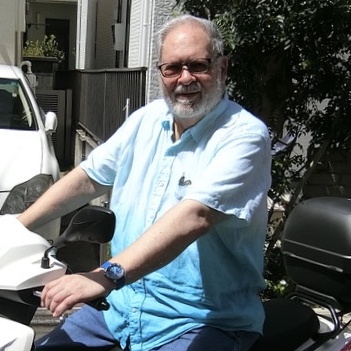In Samurai Footsteps: The 47 Ronin Tour
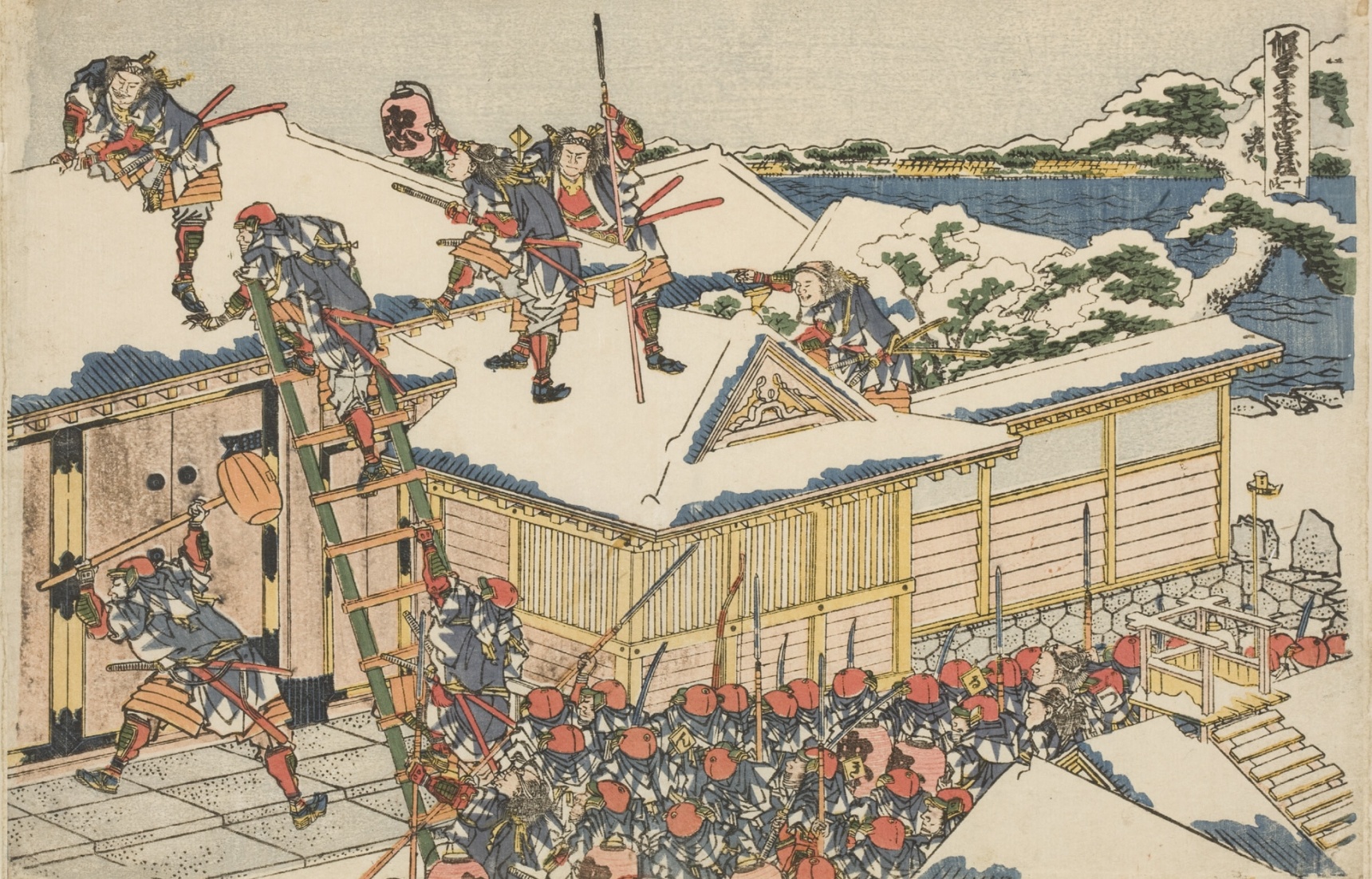
Many historical tales still resonate in modern Japan. One of the best known, which took place between the years 1701 to 1703, is the saga of Chushingura, when 47 masterless samurai (known as ronin) avenged their lord in a famous night battle in central Tokyo.
Now you can visit three of the spots most closely connected with this famous incident.
Act 1: The Saga
(Above) After years of secrecy, the 47 Ronin attack the estate of the man responsible for the death of their lord. Woodblock print by Katsushika Hokusai.
The story took place during the years of the Genroku Period, under the reign of Shogun Tokugawa Tsunayoshi, in the early 18th century.
In April 1701, Lord Asano Naganori of Ako, a small domain on Japan's Inland Sea, and the head another domain had been assigned to arrange a reception at the shogun's palace for imperial envoys from Kyoto. The two lords received instructions in palace protocol from the master of ceremonies, Kira Kozuke-no-Suke Yoshihisa.
Tragedy was soon to ensue. While the exact details are uncertain, Kira apparently made disparaging remarks to Asano, perhaps about the clothes he was wearing, as if to imply Asano was a country bumpkin. Asano (age 33) became increasingly resentful of the older man's perceived insults, and while they were walking along a corridor with tatami(straw mat) flooring known as *Matsu no Oroka*, or the Great Corridor of Pines, he became enraged and slashed at Kira with his sword, lightly wounding him before he was disarmed.
To unsheathe a sword in the confines of the palace was regarded as capital offense, and for this major breach of rules, Asano was summarily ordered to commit *seppuku* (suicide by ritual disembowelment). He died on the 21st day of the fourth month (by the lunar calendar) --- the same day as his crime.
Where It Happened: the East Gardens of the Imperial Palace
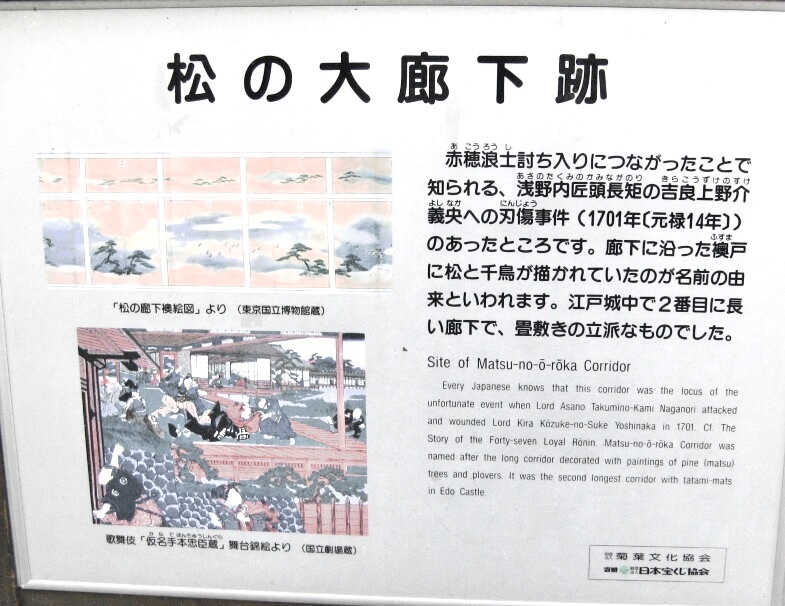
The signboard marking the spot located on the grounds of the Imperial Palace.
The spot where the standoff between Asano and Kira occurred is inside the East Gardens of the Imperial Palace, close to Tokyo Station and the Otemachi business district. Most of the year the gardens are open to the public five days a week, free of charge.
To check times and dates:
https://www.kunaicho.go.jp/e-event/higashigyoen02.html
The highest point in the garden accessible to visitors is the foundation of the tenshudai (castle tower), which affords a panoramic view of the former honmaru (center of the castle complex) and the nearby Otemachi business district. Facing south is a broad open area planted with grass and trees. Follow the footpath on the right (western) side towards the Fujimi Yagura (Fuji-viewing tower) and you'll soon come to a stone marker post and bilingual signboard identifying the approximate spot of the Matsu-no-Oroka, where Asano drew his sword with fatal results.
Map of the site:
https://www.google.com/maps/place/Site+of+Matsu-no-o-roka+(Corridor)/@35.6855184,139.7552627,18.57z/data=!4m12!1m6!3m5!1s0x60188c13425af13d:0xa31b000a35db03f9!2sImperial+Palace+East+Garden!8m2!3d35.6867998!4d139.7568589!3m4!1s0x60188c0be90e9b85:0xeba8197f51ad9c2a!8m2!3d35.6854051!4d139.7555505
Act II: Years of Secrecy, then Revenge!

After years of secrecy, the 47 ronin attacked the estate of Lord Kira on a snowy December night. Print by Kuniyoshi Utagawa.
As additional punishment, Lord Asano's estate was confiscated and 300 of his retainers lost their jobs and became ronin, or disenfranchised samurai.
Of the 300, a small band numbering around 47, led by Oishi Kuranosuke Yoshio, swore a secret oath to extract vengeance against Kira, despite a law banning such vendettas. Kira, suspecting he might be attacked, dispatched spies to monitor the activities of Asano's former soldiers, but the men of Ako dispersed and made efforts to divert Kira's suspicions, all the while seeking details on the layout of his house.
On the night of January 30, 1703 by the Western calendar, while a heavy snow fell, the troop of 47 samurai from Ako, armed with swords and arrows, converged outside the two gates of Kira's estate. At the prearranged signal from a drum, they attacked from the front and rear gates.
Kira's vassals and servants rushed to his defense, with 16 killed and another 22 wounded. The 61-year-old Kira attempted to hide in a storehouse, but was eventually discovered. Oishi offered Kira the privilege of committing seppuku--with the same sword used by Lord Asano--but the terrified Kira did not respond and Oishi ordered two men to force him to his knees, upon which Oishi decapitated him.
Where It Happened: Kira-tei Park
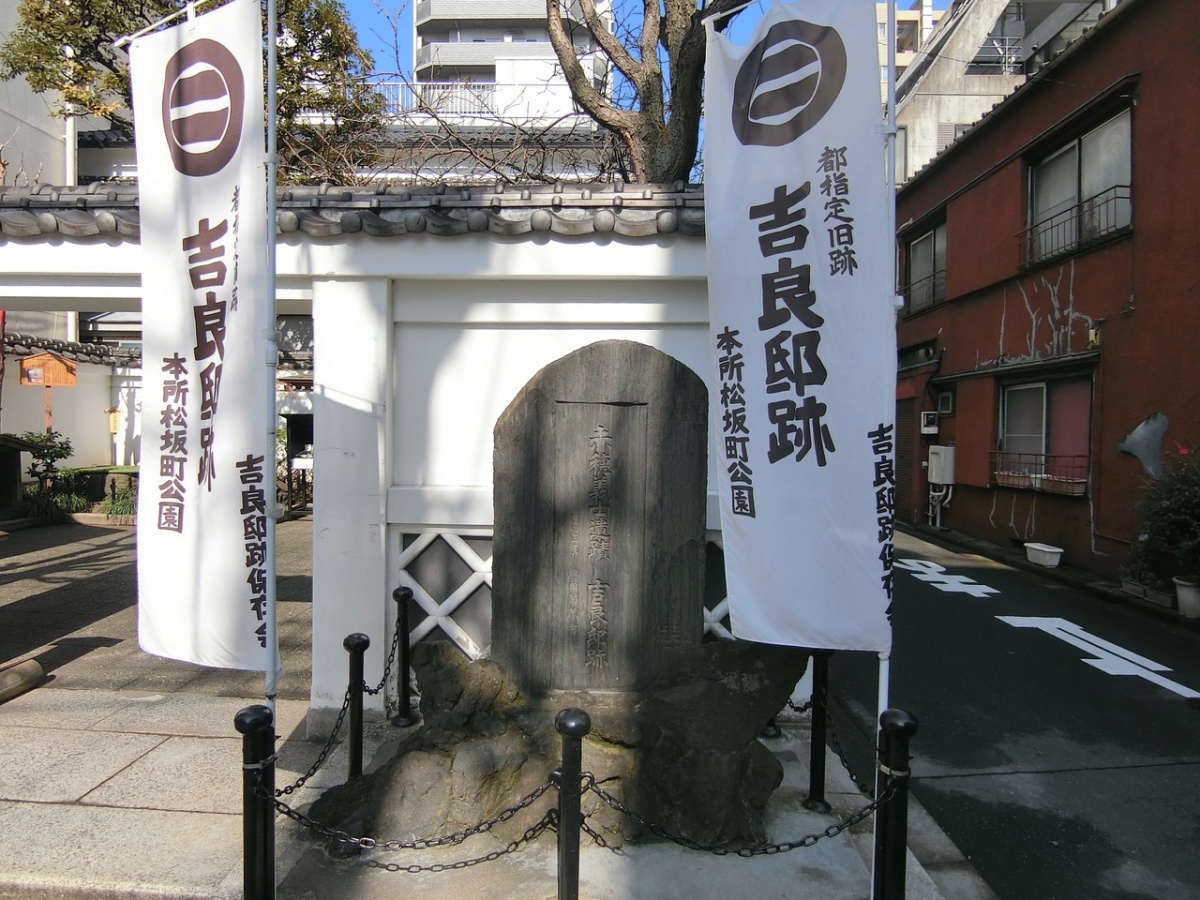
About 10 minutes from JR Ryogoku station in Sumida Ward is Honjo Matsuzaka-cho Koen--a small park also known as Kira-tei--which is all that remains of the Kira estate. It is surrounded by a distinctive low white wall capped with gray roofing tiles. Inside are signboards explaining the history, a Shinto altar and a sculpture of Lord Kira.
Address:
13-9 Ryogoku 3-chome, Sumida-ku
Map to the location:
https://www.google.com/maps/place/Honjo+Matsuzakacho+Park/@35.6933323,139.7921239,17z/data=!3m1!4b1!4m5!3m4!1s0x60188935e8b357b7:0x515c23ed1776b674!8m2!3d35.693328!4d139.7943179
Act III: The Severed Head and Mass Suicide
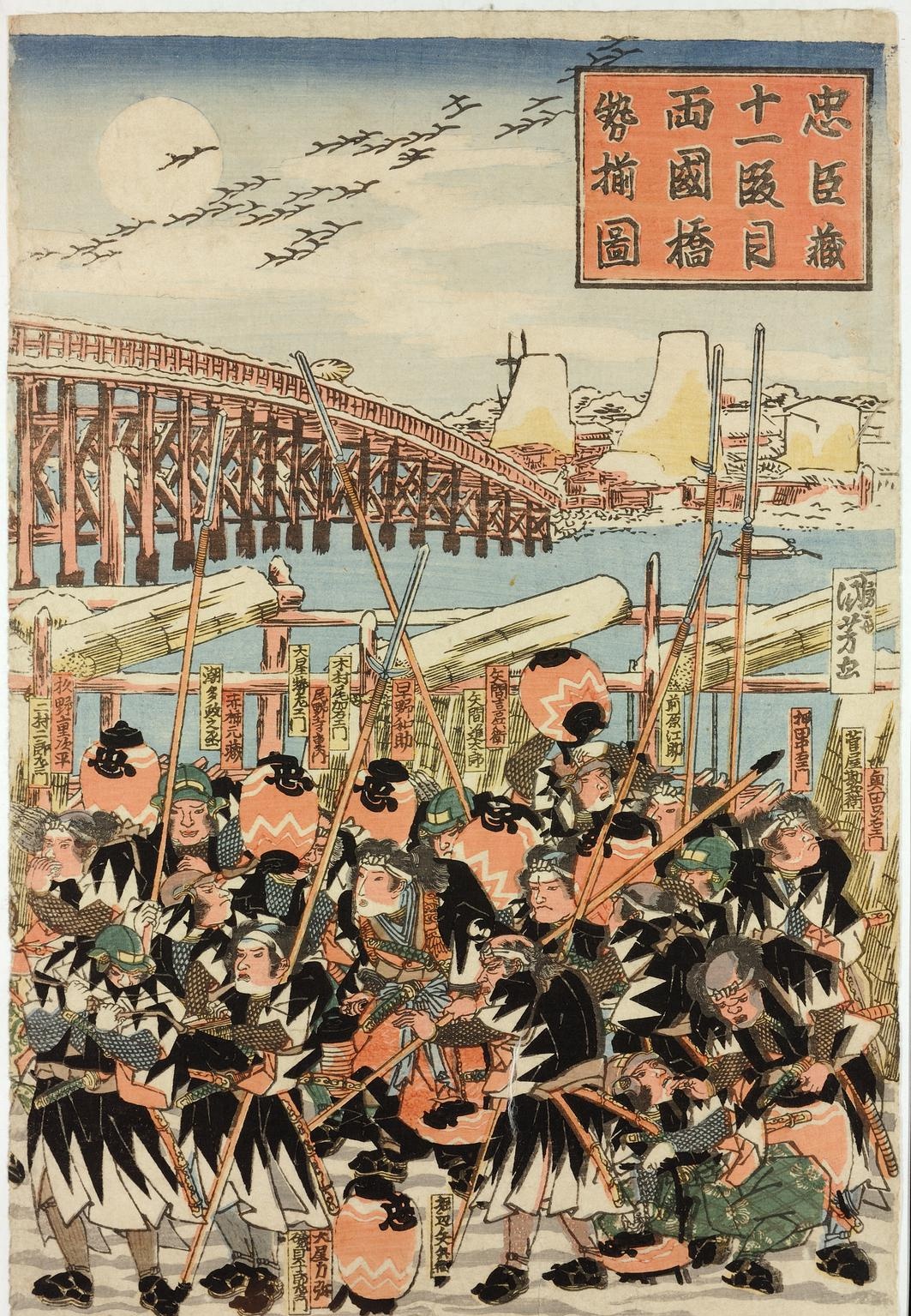
The ronin gather at a bridge near Kira's estate before making their trek across Tokyo carrying the severed head of Kira. A flock of geese fly overhead. Woodblock print by Utagawa Kuniyoshi.
With their victim's severed head wrapped in straw matting and suspended from a pole, Oishi's troop of ronin marched in a procession across the Sumida river and through the center of Edo. Their route has been well documented and some history buffs enjoy retracing it on foot.
The Route (in Japanese)
https://tokyojin.info/year/12/kiratei/
Arriving at the Sengakuji temple in present-day Minato Ward, the ronin washed their grisly trophy using water from the well, and ceremoniously presented it before their master's grave. They then turned themselves into the authorities.
Perhaps for reasons of political expediency it was decided to grant the Ako men the honor of dying by seppuku, rather than executing them as common criminals. Forty six of the ronin died on March 20, 1703. One more, a young samurai named Terasaka, had been dispatched to Ako to spread the news of the successful vendetta and was spared the death sentence.
Where It Happened: Sengakuji Temple
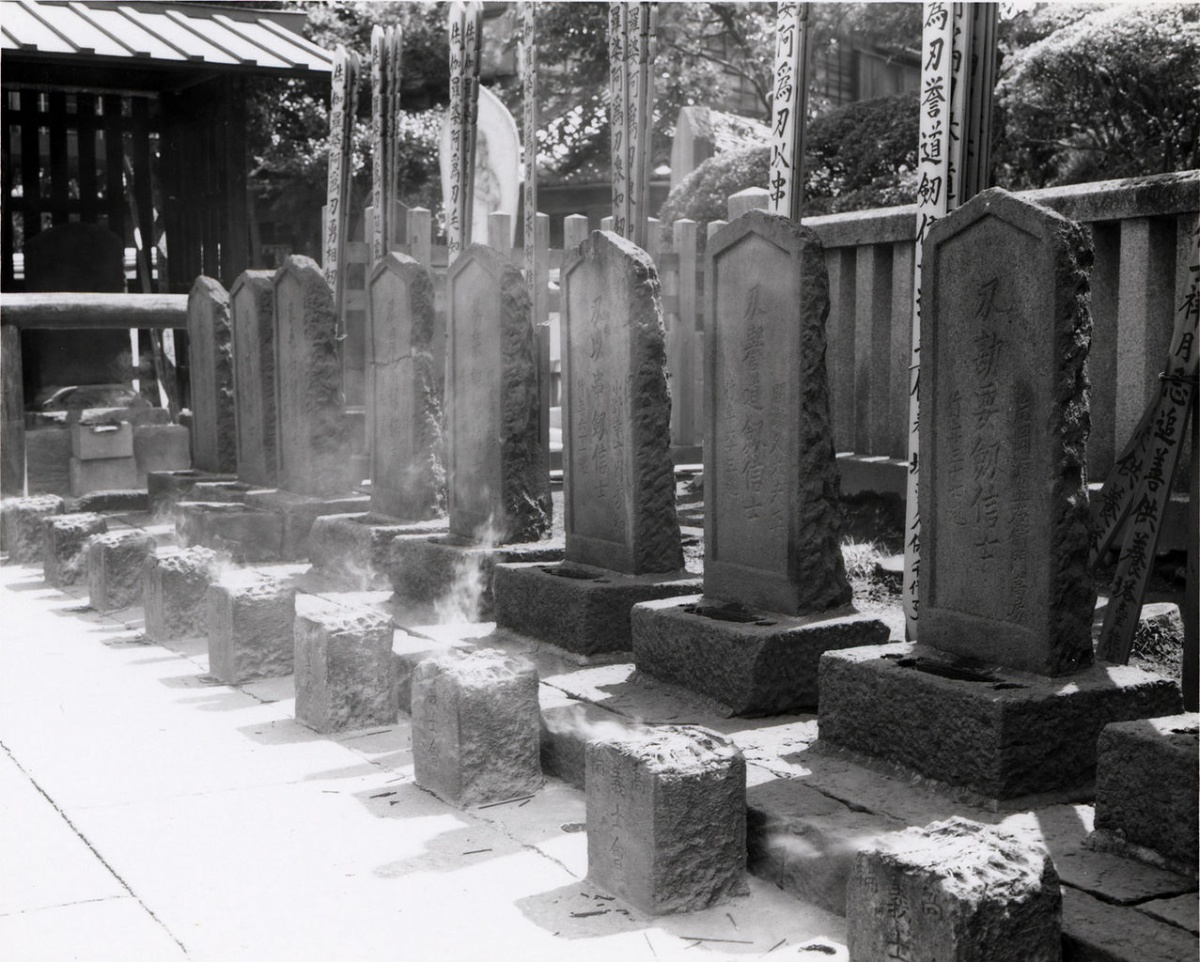
Some of the graves of the ronin at Sengakuji Temple in western Tokyo.
Sengakuji temple, a short walk from the eponymous Keikyu and Asakusa Line stations in Tokyo's Minato Ward. From the large gate turning to the left passes the well at which Kira's head was washed before presenting it at the graves of Asano. The graves of the 46 loyal retainers are arranged in a square located on the right, just beyond the top of a short stairway. Many visitors purchase a bundle of incense sticks to place before each of the graves. The temple also operates a small museum with relics from the incident.
The Sengakuji's English web site can be viewed at:
http://www.sengakuji.or.jp/about_sengakuji_en/
The Legacy
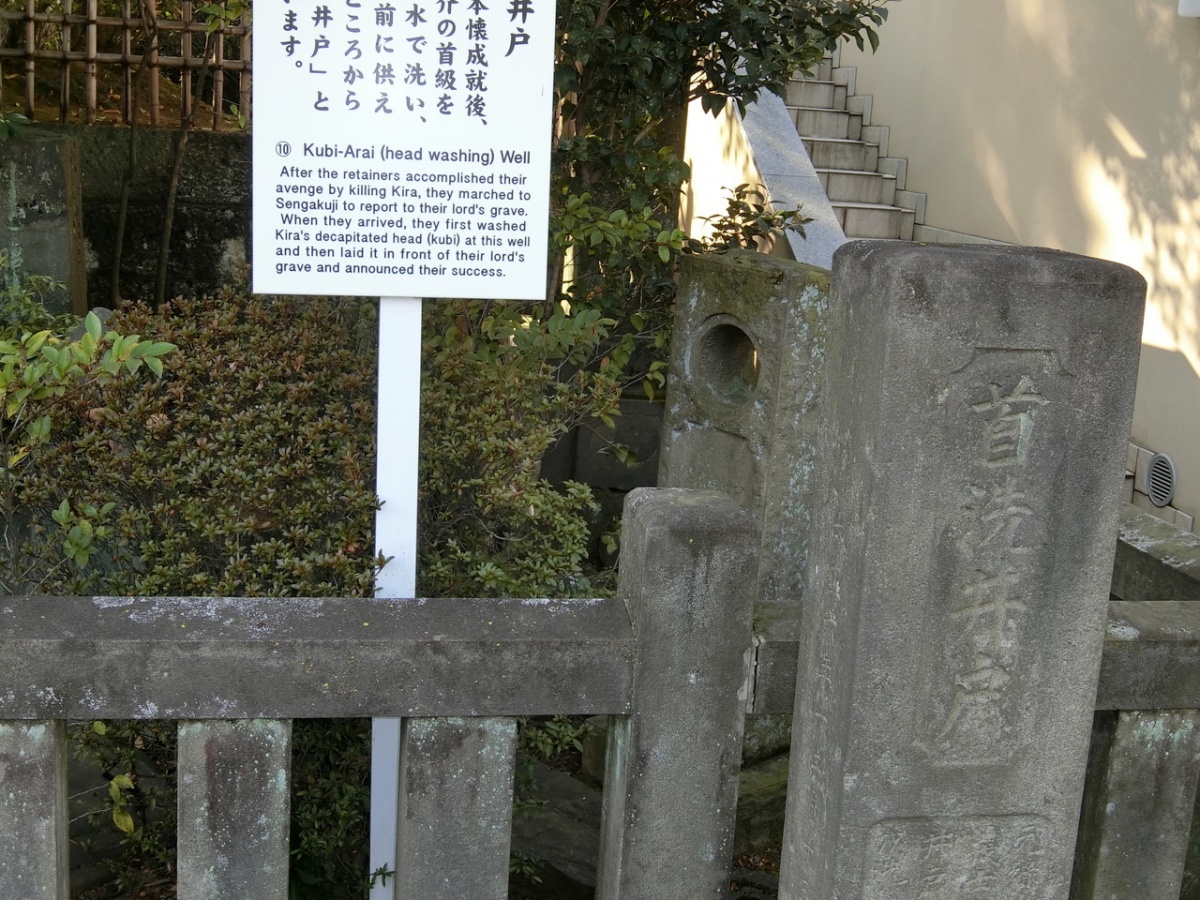
A signboard at Sengakuji Temple and the well where Lord Kira's decapitated head was washed.
While it could be described as a bloody vendetta, the saga of the 47 ronin has been ingrained into Japan's national psyche, reflecting the values of the times as the virtuous fulfillment of devotion and loyalty. In its time, honoring the 47 ronin was also seen as a mild act of defiance against the unpopular Tokugawa rulers.
In the face of heavy censorship, it was not until decades later that the saga gradually became popularized in puppet theater, kabuki drama and later cinema. Hundreds of woodblock prints were produced featuring the saga and the featured actors in plays that celebrated the ronin.
Each year on December 14 (meant to correspond to its original lunar date) two colorful festivals, called the Ako Gishisai and Tokyo Gishisai, are held to commemorate their exploits. The former is held in their home town of Ako, Hyogo Prefecture and the latter at the Sengakuji temple, in Tokyo's Minato Ward.
By visiting these places, you can see where history took place, while enjoying the fresh air (and perhaps giving your imagination a boost). Your Japanese friends will almost certainly be favorably impressed when you tell them where you went.


